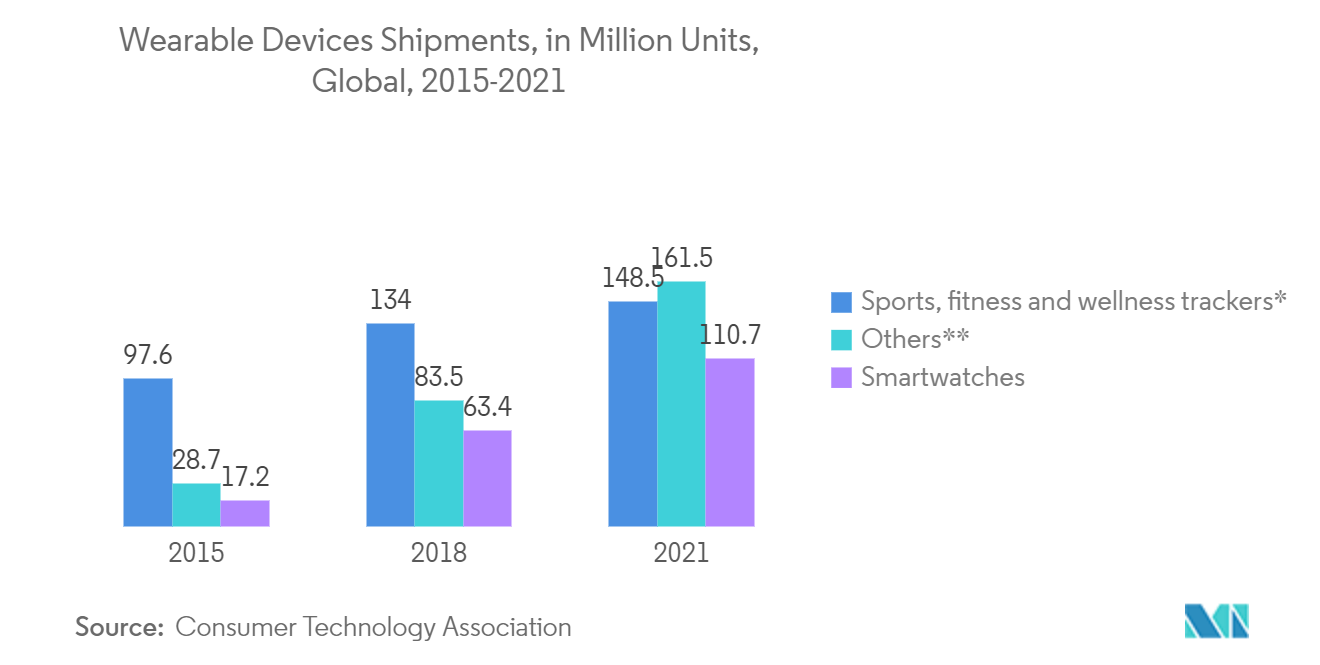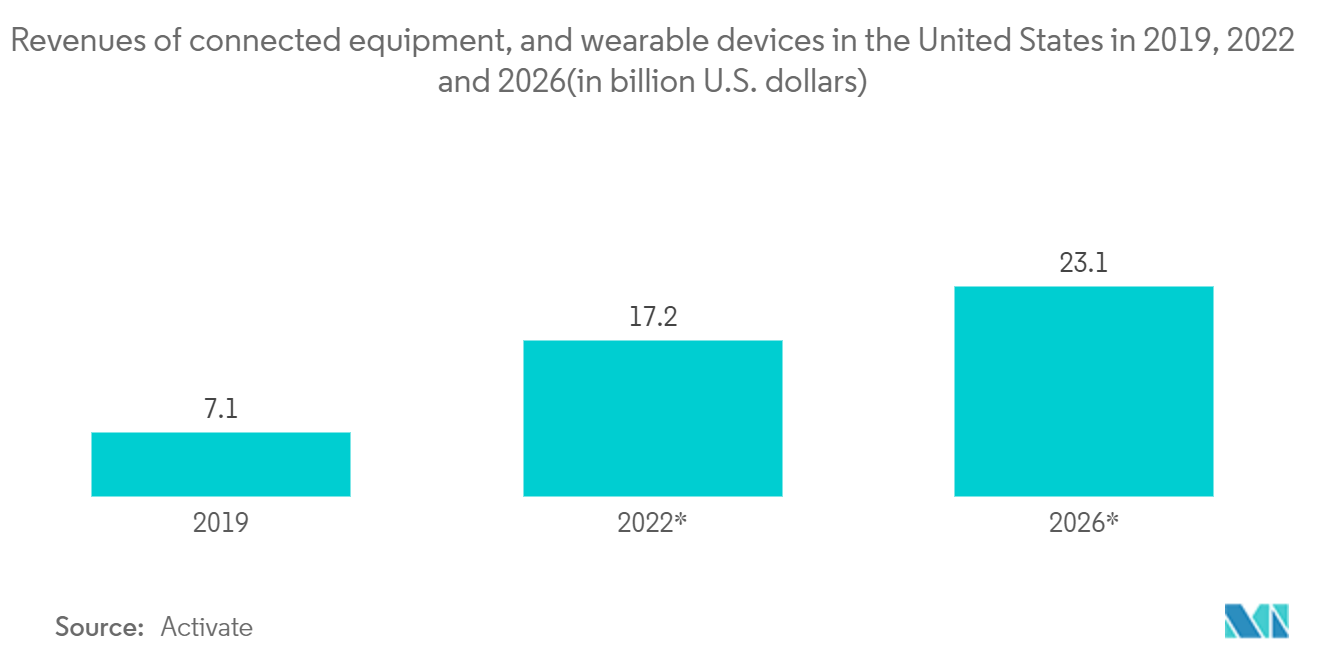Market Trends of Smart Fabrics for Sports and Fitness Industry
This section covers the major market trends shaping the Smart Fabrics for Sports & Fitness Market according to our research experts:
Miniaturisation of Electronic Components is Expected to Drive the Market
- The market growth is the trend of the miniaturization of electronics and the increasing integration of smart textiles with wearable devices. Smart fabrics are rapidly being employed in the healthcare and sports industries to detect muscle vibrations, control body temperatures, and give protection from numerous threats.
- With the ongoing technological advancements in nanotechnology and micro-fabrication technologies, miniaturization has been enabled in various electronic components, making small and cost-effective components, like smart sensors, which drive the smart fabrics for sports and fitness.
- For instance, Leibniz Institute of Photonic Technology (IPHT) researchers in Jena, Germany, is working to create a self-sufficient energy source based on textiles. Doing this would make it increasingly simpler to power mobile electronics worn near the body without access to an external power source.
- The 3-D printing production processes and the production of nano-materials by nano-dimension solutions have the potential to resolve any production challenges. They will also help create an efficient production technology for smart fabrics.
- Various institutes have also been investing in research activities to increase applications for smart clothing. For instance, MIT has created a lightweight sensor that can be embedded into flexible fabrics, including polyesters typically used in athletic wear, to monitor vital signs, including body temperature, heart rate, and respiratory rate. The sensors are machine-washable and can be integrated into clothing that can be removed and reused in different garments. The sensor has potential applications across the health industry, athletics, and astronaut vital sign monitoring. NASA and MIT Media Lab Space Exploration Initiative partially funded MIT research.
- The emerging new segment of wearable devices, the E-textile or smart fabrics segment, has changed how these devices are worn. Smart fabrics incorporate biometric sensors, minicomputers, circuits, or metallic yarns for different functionality. These fabrics can be customized accordingly to meet almost all the requirements of a sports athlete or any fitness buff.

North America is Expected to Hold the Highest Market Share
- The increasing fitness demand will lead to smart fabric growth in North America's consumer products sector. Additionally, the US-based companies' increasing developments and innovations have contributed most significantly to the region's market and, specifically, in the United States, resulting in a significant increase in the usage of Smart fabric.
- The Industrial Fabrics Association International (IFAI) held a summit in March last year. Among the key conclusions made at the summit were to increase overall investment in emerging smart fabric technologies and emphasize collaboration between market competitors as critical drivers of smart technologies' growth.
- The factors influencing the North American market include major market players, portable and comfortable usage, expanded healthcare awareness, the hovering fee of manufacturing, and technological progressions. These vital elements have advocated the adoption of smart fabric for sports in the region.
- Furthermore, compression garments made with technology-enhanced smart sports cloth are designed to assist circulation and muscle rehabilitation. Today, various other data types can be collected, including heart-rate electrocardiogram (ECG) signals and electromyography (EMG) for monitoring body muscle activity. Precise body temperature monitoring may assess a wearer's fitness and safeguard them from the adverse effects of excessive exercise.
- In April last year, the Natural Sciences and Engineering Research Council of Canada (NSERC) awarded Centennial College and its partners USD 4 million in multi-year funding to develop products for the global e-textile market and to assist small and medium-sized enterprises (SMEs) in the transportation, food production, energy, and advanced manufacturing sectors. E-textiles incorporated digital components into fabrics, such as biometric sensors, minicomputers, and electronics, providing them with new data collecting, energy transfer, and communication capabilities. E-textiles could monitor and communicate health data to advise therapy, allowing for virtual care outside of hospital settings, which would benefit the elderly and persons with chronic illnesses or disabilities.


